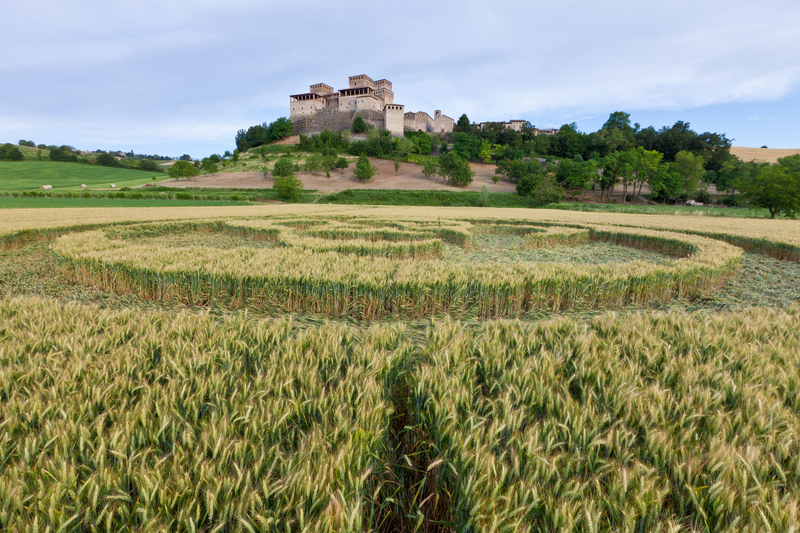Physics May Explain Mysterious Crop Circles

The giant, and seemingly perfect patterns that mysteriously appear on farmers' fields may be the result of physics, according to Richard Taylor.
UFOs and supernatural forces are off the hook.
Taylor, director of the Materials Science Institute at the University of Oregon, takes a serious, objective look at crop circles in this month's issue of Physic's World. He suggests that lasers, microwaves and global positioning systems (GPS) all play a role and have replaced the traditional rope, planks of wood and bar stools that had been used in the past.
Though the first crop circles appeared in the 1970s it wasn't until 1991 that two men came forward saying they had created the patterns as a UFO prank, though they didn’t claim to make all the circles. Even so, their hoax created the crop-circle phenomena.
And over time the circles have become more complex, with today's crop-circle designs featuring up to 2,000 different shapes, according to Taylor. Past research has suggested math plays a role in the designs, with a crop-circle researcher reporting in 2010 she had found one of the most beautiful and elegant mathematical theorems — Euler's Identity — in a vast pattern of circles in an English field near Wiltshire.
But how exactly they are created has remained an open question.
Microwaves, Taylor suggests, could be used to make crop stalks fall over and cool in a horizontal position — a technique that could explain the speed and efficiency of the artists and the incredible detail that some crop circles exhibit.
Sign up for the Live Science daily newsletter now
Get the world’s most fascinating discoveries delivered straight to your inbox.
In fact, another research team claims to be able to reproduce the intricate damage inflicted on crops using a handheld magnetron, readily available from microwave ovens, and a 120-Volt battery.
"Crop-circle artists are not going to give up their secrets easily," Taylor writes. "This summer, unknown artists will venture into the countryside close to your homes and carry out their craft, safe in the knowledge that they are continuing the legacy of the most science-oriented art movement in history."
Follow LiveScience for the latest in science news and discoveries on Twitter @livescienceand on Facebook.











